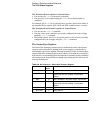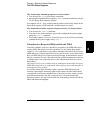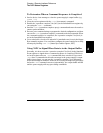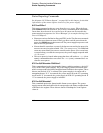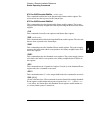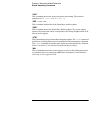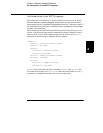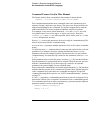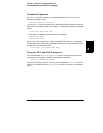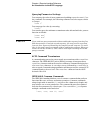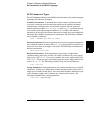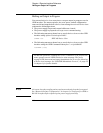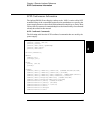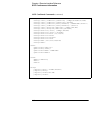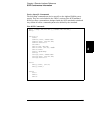
Chapter 4 Remote Interface Reference
An Introduction to the SCPI Language
112
Command Format Used in This Manual
The format used to show commands in this manual is shown below:
CURRent {<current>|MINimum|MAXimum|UP|DOWN}
The command syntax shows most commands (and some parameters) as a
mixture of upper- and lower-case letters. The upper-case letters indicate the
abbreviated spelling for the command. For shorter program lines, send the
abbreviated form. For better program readability, send the long form.
For example, in the above syntax statement,
CURR
and
CURRENT
are both
acceptable forms. You can use upper- or lower-case letters. Therefore,
CURRENT
,
curr
, and
Curr
are all acceptable. Other forms, such as
CUR
and
CURREN
, will generate an error.
Braces ( { } ) enclose the parameter choices for a given command string. The
braces are not sent with the command string.
A vertical bar ( | ) separates multiple parameter choices for a given command
string.
Triangle brackets ( < > ) indicate that you must specify a value for the enclosed
parameter. For example, the above syntax statement shows the current
parameter enclosed in triangle brackets. The brackets are not sent with the
command string. You must specify a value for the parameter (such as ‘‘
CURR
0.1
”).
Some parameters are enclosed in square brackets ( [ ] ). The brackets indicate
that the parameter is optional and can be omitted. The brackets are not sent
with the command string. If you do not specify a value for an optional
parameter, the power supply chooses a default value.
Some portions of commands are enclosed in square brackets( [ ]). The brackets
indicate that this portion of the command is optional. Most optional portions
of the command are not shown in the command description. For the full
command showing all the options, see ‘‘SCPI Command Summary’’, starting
on page 73.
A colon ( : ) separates a command keyword from a lower-level keyword. You
must insert a blank space to separate a parameter from a command keyword.
If a command requires more than one parameter, you must separate adjacent
parameter using a comma as shown below:
‘‘
SOURce:CURRent:TRIGgered
’’
‘‘
APPLy 3.5,1.5
’’



